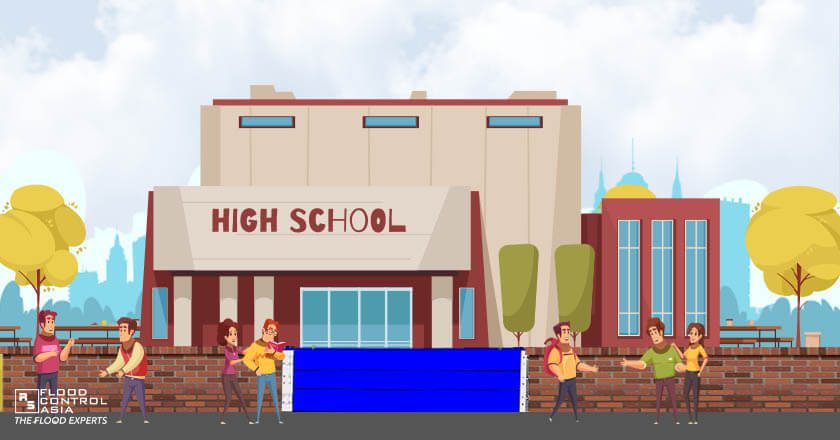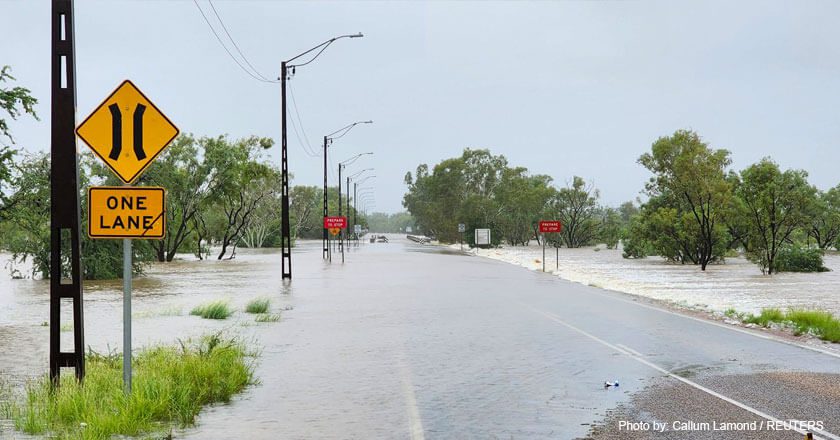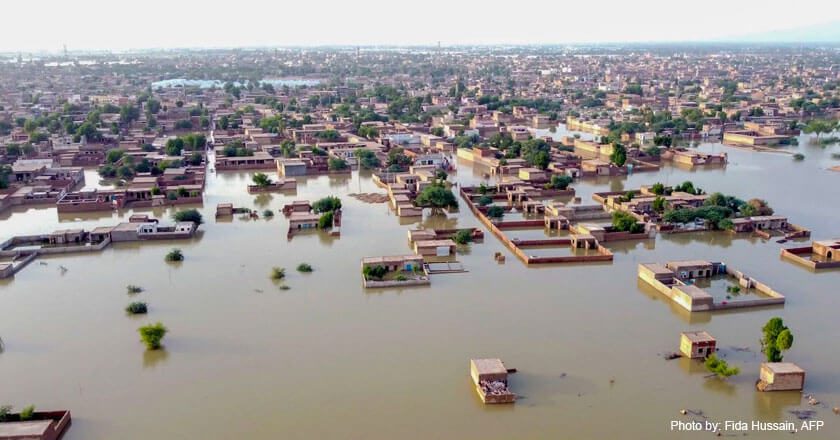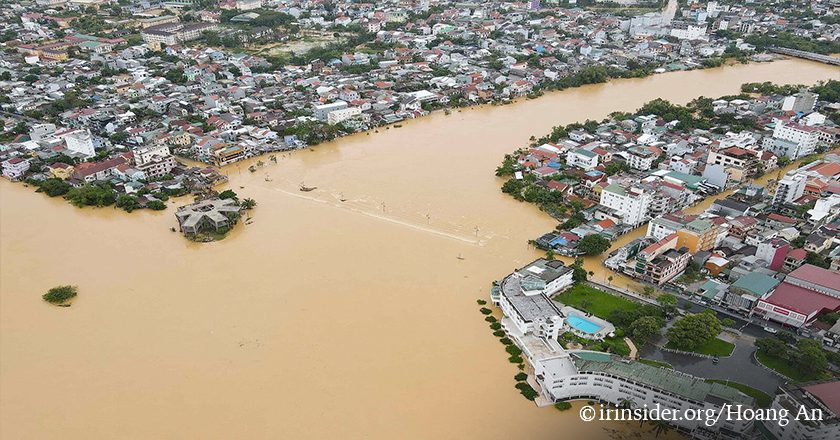3 Reasons Why Academic Institutions Need Flood Protection
January 20, 2021 | Created by: Andreas Klippe | Comments
Let us start this blog with a story.
For more than 150 years, University College Cork (UCC), the third oldest university in Ireland was just doing a great job in training more than 20,000 students in various academic disciplines. It was educating students on Mathematics, Biology, Sociology, Language, History, Engineering, among others. It was transforming the lives of many students and opening a plethora of knowledge that contributed to the advancement of the society.
Then there was flooding.
In November 2009, River Lee, a river in Ireland, overflowed onto the banks of Cork. It inundated many buildings and infrastructures around the area including the university. According to the press release from UCC, the releasing of water from the dam at Inniscarra caused the river to burst. As a result of flooding, 29 UCC buildings and some 30 of UCC’s 80 acres were submerged in floodwater. Over 500 staff were impacted by the flood and around 2,000 students were forced to be evacuated from their dormitories.

This horrific story of the University College Cork made headlines and sparked discussions about the importance of flood-protecting academic institutions.
WHY WE SHOULD FLOOD-PROTECT INSTITUTIONS?
Flood-protecting academic institutions can help not only the school management but also other stakeholders in education. In education, stakeholders refer to “anyone who is invested in the welfare and success of a school and its students”. Stakeholders can include school administrators, teachers, students, government officials, and other staff members.
Flood-protecting academic institutions can help not only the school management but also other stakeholders in education.
Here are 3 reasons why it is also important to flood-protect academic institutions.
1. Flood-protection will secure uninterrupted classes even during flood.

When buildings are flooded, there are a lot of consequences that have to be dealt with. Classrooms cannot be used when they are wet, obviously. Yet, even if some classrooms are available, their number is not enough to accommodate the number of students. Also, as flooding can bring water-borne diseases, students will not be advised to go to schools. As a result of this series of inconvenience, school administrators will have to reschedule classes, eventually leading to the extension of the academic year.
2. Flood-protection will not burden the academic institutions with damage-related costs.

Also when flood enters properties, mechanical, structural and electrical components of the buildings are severely damaged. Machines and other equipment that are impaired by floodwaters need to be repaired or replaced. Either way, the university will have to shell out money to cover the additional cost.
3. Flood-protection will ease teachers and other staff with additional load.

Lastly, during flooding, the need for immediate cleaning is required. However, since many academic institutions do not have enough utility staff, other staff like the teachers, administrative personnel and even the students will have to help in cleaning the buildings. This can compromise other work that these personnel and students should be otherwise doing.
HOW UCC FOUND A SOLUTION
The University College Cork did an investigation on how to solve the flooding problem and found out the need for an appropriate flood-protection solution. The university administrators searched for a reliable supplier that can provide modern and quality flood barriers that can fit the existing structure of the properties. After necessary engineering services, the products were delivered and installed. The staff were also trained on how to maintain the flood barriers.
One of the areas that was flood-protected was the Mardyke Arena. This arena has been the meeting place for students, staff, and alumni who want to satisfy their sporting and recreational needs. Mardyke Arena has gyms, saunas, sports halls, a swimming pool, a fitness center, an athletic track, courts, and dance studios. Hence, too much was put at risk when the river overflowed onto the banks and severely flooded the area. A combination of flood protection barriers were installed around the area because of the structural design of the place. The flood barriers that were installed were: Flood Doors, Flip-Up Flood Barriers, Lift-Hinged FloodGates, Glass-Paneled Flood Barriers, and Demountable Flood Barriers.

Aside from the Mardyke Arena, Lewis Glucksman Gallery was also flood protected. This Gallery is an art center that promotes culture and education of visual arts. Since it is an art gallery, it has to be made sure that the aesthetics of the building was not altered. To achieve this, demountable flood barriers were set up so that the gallery’s artistic facade can be preserved.

Now, UCC is flood-protected from flood damages.
WHAT IS THE BEST FLOOD-PROTECTION TECHNOLOGY?
More than ever, with the worsening climate change, it is certainly hoped that other academic institutions can also secure their properties with modern flood-protection technology. To fully flood-protect academic institutions, it is critical that appropriate flood barriers are used. Appropriate flood barriers should be made of materials that will withstand water pressure, are weather resistant, are durable, and are non rusting. Ultimately, they have to be made of high-grade aluminum, hot-dipped galvanized or stainless steel.
In addition to that, the flood barriers should be able to pass the standards set by international norms. You should also be sure that the flood barriers underwent a performance testing. Performance testing for the barriers is done to ensure the flood barriers are reliable, functional, and capable of withstanding force and possible leakages.
More than ever, with the worsening climate change, it is certainly hoped that other academic institutions can also secure their properties with modern flood-protection technology.
Flood barriers that have a “Quality—Made in Germany” seal can be relied on when academic institutions need to flood-protect their properties. These flood barriers meet all the expectations of an appropriate barrier mentioned above.
WHAT TYPE OF FLOOD BARRIERS ARE EXISTING?
Flood barriers can be removable or permanent; they can also be operated manually, semi-automatically, or automatically. Several flood barriers can be manufactured to tailor-fit different entrances and property designs: they can be swinging, flipping up, sliding, or rising. For academic institutions that have diverse building features, a wide array of flood barriers can be considered to ensure optimal protection from raging floodwaters.

THE FUTURE OF ACADEMIC INSTITUTIONS
Academic institutions from around the world have greatly contributed to the opening of the human mind. They have taught us that the world is not flat but an oblate spheroid. They have debunked myths that there is a pot of gold at the end of a rainbow. They have educated us that there are four, not three states of matter.
Academic institutions can and will teach us more. But first, we must flood-protect them.
To learn more about the latest flood protection technology, subscribe now to our Flood Expert Tips (IF YOU HAVEN’T YET!).
Stay safe and flood-free!






